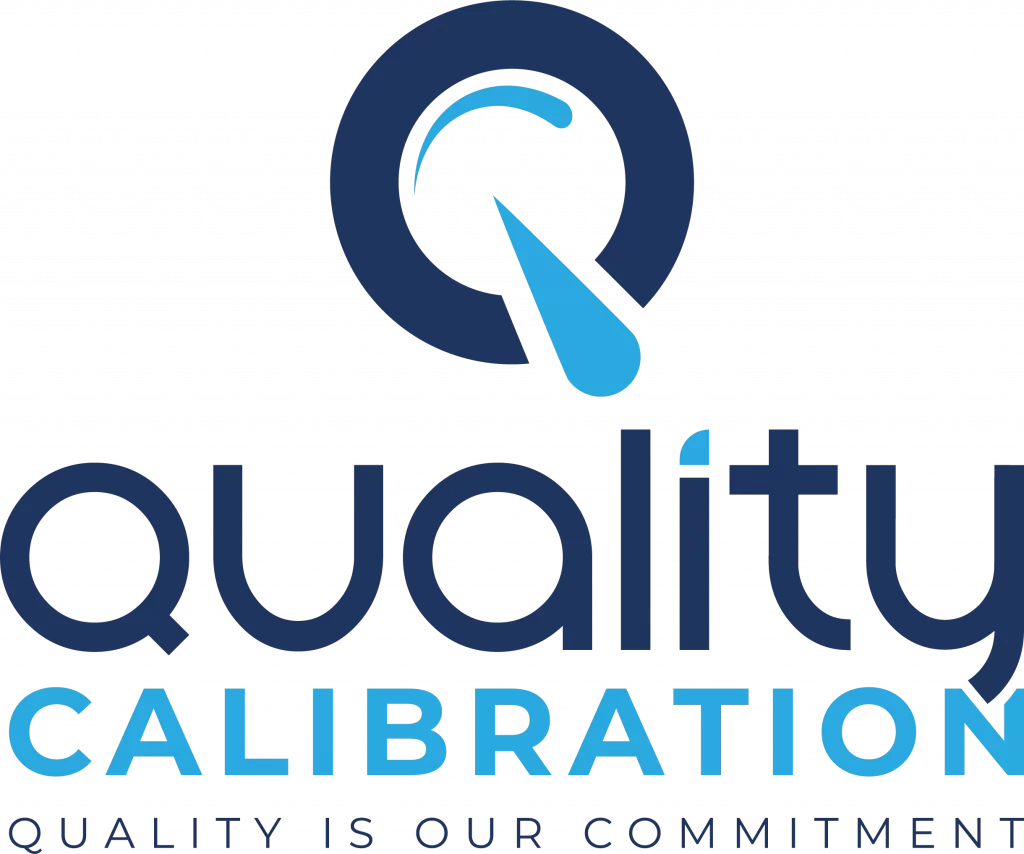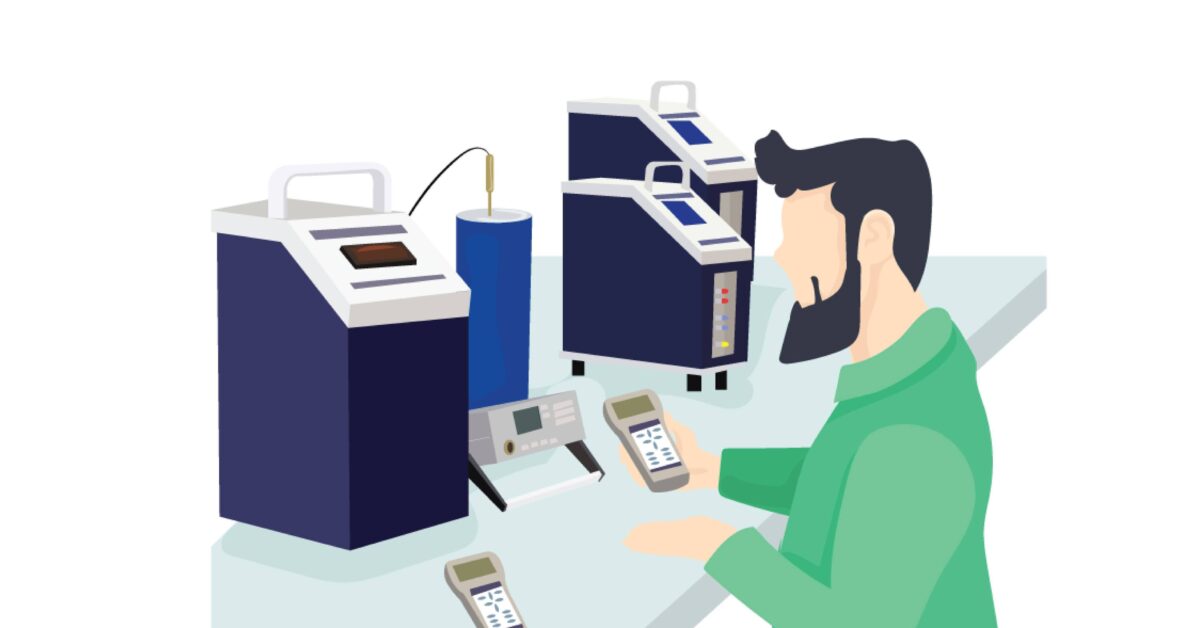In today’s technologically advanced world, Calibration of Instrument is crucial across various industries. From healthcare to manufacturing, ensuring the reliability and precision of instruments is vital for achieving consistent and high-quality results.
This comprehensive article will guide you through the intricacies of instrument calibration, exploring its importance, common types of instruments requiring calibration, the calibration process, and the benefits of regular calibration. We will also introduce Quality Calibration Solutions as a reliable provider of calibration services and explain why choosing the right calibration partner is essential. How Quality Calibration Solutions is the perfect Company for Calibration of Instruments.
So, let’s dive into the world of calibration and discover how it can enhance the accuracy and reliability of your instruments.
What is Calibration?
Calibration is the process of comparing the measurements of an instrument or device to a known reference standard to determine its accuracy. It involves adjusting the instrument if necessary to align its readings with the reference standard. The primary goal of calibration is to minimize measurement uncertainties and ensure the instrument provides reliable and traceable results.
Instruments, over time, may deviate from their original accuracy due to various factors such as wear and tear, environmental conditions, or regular usage. Calibration helps identify and rectify these deviations, ensuring instruments maintain their accuracy and deliver precise measurements.
What is the Purpose of Calibration of Instrument
The purpose of calibration of an instrument is to ensure its accuracy and reliability in measuring or detecting various quantities or parameters. Calibration is a process of comparing the measurements of an instrument against a known reference or standard to determine any deviations or errors. It involves adjusting the instrument to align its readings with the reference standards.
Here are some key reasons why calibration of instruments is essential:
Accuracy:
- Calibration helps to establish the accuracy of an instrument by comparing its measurements to a traceable standard. It ensures that the instrument provides reliable and precise results, which is crucial in fields where accuracy is vital, such as scientific research, manufacturing, and healthcare.
Compliance:
- Many industries have specific regulations and standards that require instruments to be calibrated regularly. Calibration of Instruments help organizations comply with these standards, ensuring that their processes meet the required quality, safety, and environmental guidelines.
Quality Assurance:
- Calibration of instruments is an integral part for quality assurance programs. By calibrating instruments, organizations can verify that their products or services meet the desired quality standards. It helps to identify any deviations or inconsistencies early on, allowing for corrective actions to be taken promptly.
Reliability:
- Calibration improves the reliability of instruments by reducing uncertainties and errors. It ensures that the instrument consistently performs within acceptable limits, enhancing confidence in the measurement results and reducing the risk of faulty readings or erroneous data.
Traceability:
- Calibration establishes traceability by relating instrument measurements to recognized national or international standards. Traceability provides a documented chain of comparisons that ensures the reliability and consistency of measurements across different laboratories or facilities.
Preventive Maintenance:
- Calibration of Instruments is often performed as part of a preventive maintenance program. Regularly calibrating instruments can help detect any drift or deterioration in performance over time. It allows for timely adjustments, repairs, or replacements, preventing costly breakdowns or failures.
Data Integrity:
- In scientific research, data integrity is crucial. Calibrated instruments help maintain the integrity of experimental or observational data by ensuring that measurements are accurate and reliable. It enhances the credibility and reproducibility of research outcomes.
Why Calibration of Instrument is Necessary
Accurate and reliable measurements are critical for a wide range of applications. Whether it’s monitoring the temperature in a pharmaceutical storage unit, measuring the flow rate of a chemical process, or determining the pH level of a water sample, the precision of instruments directly impacts the quality and safety of the final product.
Here are some key reasons highlighting the importance of instrument calibration:
Ensuring Accuracy and Reliability
Calibration of instrument guarantees that the measurements obtained from an instrument are accurate and reliable. By comparing the instrument’s readings to a known reference standard, any discrepancies can be identified and corrected. This ensures that the instrument provides precise and consistent results, allowing for confident decision-making based on accurate data.
Compliance with Standards and Regulations
Many industries have specific standards and regulations governing the accuracy and calibration requirements of instruments. Compliance with these standards is essential to meet legal obligations, maintain quality control, and ensure customer satisfaction. Calibration of instrument ensures instruments meet the necessary compliance criteria, preventing any potential legal or quality issues.
Cost Savings and Efficiency
Calibration helps prevent costly errors and inefficiencies. Inaccurate measurements can lead to product defects, production delays, or even safety hazards. By regularly calibrating instruments, companies can minimize the risk of these issues, resulting in improved productivity, reduced waste, and reduced instrument calibration cost in the long run.
Now that we understand the importance of instrument calibration let’s explore some common types of instruments that require calibration.
Common Types of Instruments Requiring Calibration
Instrument calibration is applicable to a wide range of equipment used in various industries. Here are some common types of instruments that often require calibration:
Pressure Gauges
Pressure gauges are widely used in industries such as manufacturing, oil and gas, and automotive. Accurate pressure measurements are crucial for maintaining safe and efficient operations. Regular calibration of pressure gauges ensures they provide accurate readings, reducing the risk of over or under-pressurization and ensuring optimal performance.
Temperature Sensors
Temperature sensors are vital in applications ranging from climate control systems to scientific research. Calibrating temperature sensors ensures their accuracy and reliability, enabling precise temperature control, safeguarding valuable samples or products, and maintaining optimal conditions for various processes. Learn more about Thermometer Calibration.
pH Meters
pH meters are extensively used in laboratories, wastewater treatment plants, and the food and beverage industry. These instruments measure the acidity or alkalinity of a solution. Calibration of pH meters is crucial to ensure accurate pH measurements, which are essential for maintaining water quality, monitoring chemical reactions, and ensuring product safety and consistency.
Flow Meters
Flow meters are employed in industries like oil and gas, water treatment, and manufacturing to measure the rate of fluid flow. Regular calibration of flow meters ensures accurate measurement of fluid quantities, enabling efficient resource allocation, precise process control, and compliance with industry standards.
Weighing Scales
Weighing scales are used across numerous sectors, including pharmaceuticals, logistics, and retail. Accurate weight measurements are vital for quality control, inventory management, and ensuring fair trade practices. Calibration of weighing scales guarantees their accuracy and helps prevent errors in measurement that could lead to financial losses or legal complications.
Torque Wrench
Torque wrenches play a critical role in engineering and automotive industries. These precision tools provide controlled tightening of nuts and bolts to specific torque values, ensuring proper assembly and preventing over-tightening. Accurate torque application is crucial for maintaining structural integrity, preventing damage, and ensuring safety during various mechanical operations.
Now that we have covered some common types of instruments requiring calibration, let’s delve into the Calibration Techniques for Instruments..
What is Calibration Process – What are the Steps of Calibration?
The calibration process involves several essential steps to ensure accurate and reliable instrument performance. Let’s explore each step in detail:
Pre-Calibration Preparations
Before initiating the calibration process, certain preparations are necessary to ensure a smooth and efficient procedure. These preparations may include:
- Identifying the instruments requiring calibration: Create a comprehensive list of instruments that need calibration, considering their criticality and frequency of use.
- Establishing a calibration schedule: Develop a calibration schedule based on industry recommendations, instrument specifications, and regulatory requirements. This schedule ensures that instruments are calibrated at regular intervals to maintain accuracy.
- Gathering calibration standards and equipment: Acquire the necessary reference standards, traceable to national or international measurement standards, and calibration equipment required for the specific instrument types.
Calibration of Instrument Standards and Traceability
Calibration standards serve as the reference points against which the instruments under calibration are compared. These calibration standards for instruments must have a known level of accuracy and traceability to a recognized metrology institute.
Traceability ensures that the measurements obtained during calibration can be traced back to an internationally accepted measurement standard, providing confidence in the accuracy of the calibration results. Quality Calibration Solutions ensures the use of traceable calibration of Instrument standards, ensuring the highest level of accuracy in their calibration processes.
Calibration Procedures for Different Instruments
Calibration procedures outline the step-by-step instructions for performing calibration of instrument accurately. These procedures may vary depending on the type of instrument being calibrated. The general process of how to calibrate an instrument is explained below:
Preparation:
- Clean the instrument and ensure it is in optimal working condition before calibration.
- Measurement Comparison: Compare the instrument’s measurements to the reference standard at various predetermined points or levels.
Adjustment:
- If the instrument readings deviate from the reference standard, make necessary adjustments to align the instrument’s readings with the standard. This adjustment process may involve mechanical adjustments, software corrections, or recalibration of internal components.
Reverification:
- After making adjustments, verify that the instrument’s readings now align with the reference standard. Repeat measurements at different points to ensure consistency.
Documentation:
- Record all calibration data, including initial readings, adjustments made, and final calibration results. This documentation provides a traceable record of the instrument’s calibration history.
Calibration Certificates
Following the completion of the calibration process, a calibration certificate is issued. This certificate serves as official documentation, providing details of the calibration procedure, the instrument’s readings, any adjustments made, and the final calibration results. It acts as evidence of compliance with calibration of instrument standards and is often required for regulatory purposes.
Calibration certificates also include information such as the date of calibration, the validity period, and the name and signature of the calibration technician or laboratory. Quality Calibration Solutions provides comprehensive calibration certificates for all calibrated instruments, ensuring transparency and compliance.
Now that we understand the calibration process, let’s explore the benefits of regular instrument calibration.
Benefits of Regular Instrument Calibration
Regular calibration of instrument offers numerous benefits, ensuring accurate measurements, compliance with standards, and cost-effective operations. Let’s delve into these benefits:
Ensuring Accuracy and Reliability
Calibration of instrument guarantees the accuracy and reliability of instrument measurements. By aligning the instrument’s readings with reference standards, calibration minimizes measurement uncertainties, leading to precise and consistent results. This accuracy enhances the overall quality of processes and products, instilling confidence in the data obtained from calibrated instruments.
Compliance with Standards and Regulations
Calibration plays a crucial role in complying with industry standards and regulations. Many industries, such as healthcare, pharmaceuticals, and aerospace, have specific calibration requirements to ensure safety, accuracy, and regulatory compliance. Regular calibration of instrument ensures that instruments meet these standards, allowing businesses to operate within legal frameworks and maintain high-quality standards.
Cost Savings and Efficiency
Regular calibration can lead to significant cost savings and increased operational efficiency. Accurate measurements prevent errors, such as overproduction or wastage, and reduce the risk of product defects or recalls. Calibration also aids in optimizing process control, ensuring efficient resource allocation and reducing downtime. By avoiding costly errors and enhancing efficiency, calibration helps businesses achieve cost savings and improve their bottom line.
Now that we understand the benefits of regular calibration, it is essential to choose a reliable calibration service provider. Quality Calibration Solutions stands out as a trusted partner in providing top-notch calibration services for instruments.
Choosing a Reliable Calibration Service Provider
Selecting the right calibration service provider is crucial to ensure accurate and reliable calibration of instruments. Quality Calibration Solutions is a leading provider in the field, offering comprehensive calibration services tailored to meet diverse industry needs. Let’s explore why Quality Calibration Solutions is the ideal choice for your calibration requirements.
Introducing Quality Calibration Solutions
Quality Calibration Solutions is a trusted and reputable calibration service provider with a strong track record in delivering exceptional calibration services. With their commitment to quality, precision, and customer satisfaction, they have established themselves as a reliable partner for businesses across various industries.
Why Choose Quality Calibration Solutions?
There are several compelling reasons to choose Quality Calibration Solutions for your calibration needs:
- Expertise and Experience: Quality Calibration Solutions boasts a team of highly skilled and experienced calibration technicians who possess in-depth knowledge of calibration techniques and standards. Their expertise ensures accurate and reliable calibration results.
- State-of-the-Art Facilities: Quality Calibration Solutions is equipped with advanced calibration equipment and state-of-the-art facilities. This enables them to perform precise and efficient calibrations, meeting the highest industry standards.
- Compliance and Accreditation: Quality Calibration Solutions adheres to strict quality control measures and is accredited to internationally recognized standards. This accreditation ensures their competence and compliance with the most stringent calibration requirements.
- Customized Calibration Services: Quality Calibration Solutions understands that each industry and instrument have unique calibration needs. They offer customized calibration services tailored to specific requirements, ensuring accurate calibration for a wide range of instruments.
- Prompt Turnaround Time: Efficiency is a hallmark of Quality Calibration Solutions. They prioritize quick turnaround times without compromising the quality of calibration. This allows businesses to minimize downtime and maintain operational continuity.
Range of Calibration Services
Quality Calibration Solutions offers a comprehensive range of calibration services covering various types of instrument calibration. Their expertise extends to instruments such as pressure gauges, temperature sensors, pH meters, flow meters, weighing scales, and many more. Whatever your calibration needs may be, Quality Calibration Solutions has you covered.
Industry Expertise
Quality Calibration Solutions has extensive experience serving diverse industries, including pharmaceuticals, healthcare, manufacturing, aerospace, and automotive. They understand the unique calibration requirements of each industry and are well-versed in compliance with industry-specific standards and regulations.
Calibration Equipment and Facilities
Quality Calibration Solutions invests in advanced calibration equipment and maintains state-of-the-art facilities to ensure accurate and reliable calibrations. Their commitment to using the latest technology guarantees precise measurements and the highest level of calibration quality.
Customer Testimonials
Quality Calibration Solutions has a proven track record of delivering exceptional calibration services and satisfying their customers’ needs. Numerous satisfied clients have provided positive testimonials, highlighting the reliability, accuracy, and professionalism of their services.
Choosing Quality Calibration Solutions as your calibration service provider ensures that your instruments are in capable hands, guaranteeing accurate measurements and compliance with industry standards.
Conclusion
Calibration of instrument is a vital process for maintaining accurate and reliable measurements in various industries. It ensures instrument precision, compliance with standards, and cost-effective operations. Quality Calibration Solutions emerges as a trusted partner, offering comprehensive calibration services tailored to meet diverse industry needs. With their expertise, state-of-the-art facilities, and commitment to customer satisfaction, they are the ideal choice for businesses seeking reliable and accurate calibration services.
Make the smart choice by partnering with Quality Calibration Solutions, and experience the benefits of precise measurements, compliance, and cost savings. Contact Quality Calibration Solutions today to ensure the accuracy and reliability of your instruments.
Frequently Asked Questions
How many types of calibration are there?
There are generally two types of calibration: internal calibration and external calibration. Internal calibration is performed within a device or instrument using built-in reference standards, while external calibration involves comparing the measurements of an instrument against a known, traceable standard.
Which instruments are calibrated?
A wide range of instruments across various industries require calibration, including but not limited to: thermometers, pressure gauges, weighing scales, pH meters, spectrophotometers, oscilloscopes, flow meters, torque wrenches, and many others.
What is a calibration test?
A calibration test is a systematic process of comparing the measurements or readings of an instrument or device against known reference standards. It helps determine the accuracy, precision, and reliability of the instrument’s measurements and ensures its proper functioning.
What is the difference between calibration and QC?
Calibration and QC (Quality Control) are related but distinct processes. Calibration involves comparing the measurements of an instrument to known standards to ensure accuracy, while QC involves assessing the overall quality of a product, process, or system to ensure it meets predefined criteria and standards. Calibration is a specific aspect of QC that focuses on the accuracy of measurement instruments.
What are calibration requirements?
Calibration requirements refer to the criteria and specifications that need to be met during the calibration process. These requirements typically include accuracy standards, measurement traceability, calibration interval, environmental conditions, documentation, and adherence to relevant regulations or industry standards.
What is calibration in a laboratory?
Calibration of instrument in a laboratory refers to the process of verifying and adjusting the measurements of various instruments and equipment used for scientific experiments and analyses. It ensures the reliability and accuracy of the laboratory’s measurements and helps maintain the integrity of research and testing results.
What is mechanical calibration?
Mechanical calibration involves the calibration of mechanical instruments and devices, such as torque wrenches, pressure gauges, flow meters, or mechanical weighing scales. It verifies and adjusts the mechanical parameters of these instruments to ensure accurate and consistent measurements.
What are the components of calibration?
The components of calibration typically include the instrument or device being calibrated, known reference standards, measurement procedures, calibration software or tools, calibration certificates, calibration records, and trained personnel who perform the calibration process.
What is calibration error?
Calibration error refers to the difference between the measured value of an instrument or device during calibration and the true value provided by the reference standard. It indicates the level of inaccuracy or deviation of the instrument’s measurements from the desired accuracy.
How is calibration accuracy calculated?
Calibration accuracy is typically calculated by comparing the measurements obtained from an instrument during calibration against the known, traceable reference standards. The difference between the instrument’s readings and the reference standard values is used to determine the calibration accuracy, usually expressed as a percentage or a tolerance range.
What is a good calibration score?
A good calibration score depends on the specific requirements of the instrument and the application. Generally, a calibration score is considered good if the measured values fall within an acceptable tolerance range determined by the industry standards, regulations, or specific application requirements.
What is the difference between calibration and validation?
Calibration involves verifying and adjusting the measurements of an instrument against known reference standards to ensure accuracy. Validation, on the other hand, refers to the process of evaluating and documenting the performance and reliability of an entire system or process to ensure it meets predefined criteria or specifications. Calibration focuses on the accuracy of individual instruments, while validation assesses the overall system performance.
What is the highest level of calibration?
The highest level of calibration is often referred to as primary calibration. It involves directly comparing the measurements of an instrument to national or international measurement standards that are maintained by accredited calibration laboratories. Primary calibration establishes the most accurate reference points for calibration of instrument.
What is the lower limit of calibration?
The lower limit of calibration refers to the minimum value or measurement range that can be accurately calibrated for a particular instrument. It represents the lowest point within which the instrument’s measurements can be reliably calibrated and considered accurate.
What is risk calibration?
Risk calibration typically refers to the process of evaluating and adjusting the measurements of an instrument or system to mitigate potential risks associated with measurement errors. By calibrating instruments and ensuring their accuracy, the risk of inaccurate measurements and the subsequent consequences can be reduced or eliminated.
What does calibration quality mean?
Calibration quality refers to the degree of accuracy, reliability, and consistency achieved during the calibration process. It indicates how well an instrument’s measurements align with the known reference standards and the level of confidence in the instrument’s ability to provide accurate results.
What is calibration also known as?
Calibration is also known as instrument calibration, metrological calibration, or simply calibrating an instrument. These terms are used interchangeably to refer to the process of verifying and adjusting the measurements of an instrument against known reference standards.
What are 2 methods of calibration?
Two common methods of calibration of instrument are the comparative method and the direct method. The comparative method involves comparing the measurements of the instrument against a higher accuracy reference instrument. The direct method involves adjusting the instrument’s measurements directly based on known reference standards without the need for a secondary instrument.
What are the two types of calibration?
The two types of calibration are internal calibration and external calibration. Internal calibration is performed within a device or instrument using built-in reference standards, while external calibration involves comparing the measurements of an instrument against a known, traceable standard.
What is calibration tolerance?
Calibration tolerance refers to the acceptable range of deviation or error that is considered permissible for an instrument during calibration. It defines the maximum allowable difference between the instrument’s measurements and the reference standard values and ensures that the instrument remains within an acceptable level of accuracy.
What is a good accuracy ratio?
A good accuracy ratio depends on the specific application and industry requirements. Generally, a good accuracy ratio is achieved when the measured values of an instrument or system fall within an acceptable tolerance range, minimizing the deviation from the true or expected values.
How do you calculate accuracy?
Accuracy is typically calculated by comparing the measured values of an instrument or system against the true or expected values. The accuracy is determined by calculating the difference or error between the measured values and the true values, usually expressed as a percentage or within a specified tolerance range.
What is ISO in calibration?
ISO, or the International Organization for Standardization, is an international standard-setting body that develops and publishes standards for various industries. In the context of calibration, ISO standards such as ISO/IEC 17025 provide guidelines and requirements for the competence and quality management of calibration laboratories, ensuring their adherence to recognized calibration practices.
What is calibration interval?
Calibration interval refers to the instrument calibration frequency or time period at which an instrument or device needs to be calibrated to maintain its accuracy and reliability. The calibration interval is determined based on factors such as the instrument’s stability, usage conditions, industry regulations, and the specific requirements of the application.
What is mechanical calibration?
Mechanical calibration involves the calibration of mechanical instruments and devices, such as torque wrenches, pressure gauges, flow meters, or mechanical weighing scales. It verifies and adjusts the mechanical parameters of these instruments to ensure accurate and consistent measurements.

Md. Hasan Ibrahim is a Technical Manager at Quality Calibration with extensive experience in the calibration sector since 2015. Holding a Bachelor of Science degree in Mechanical Engineering from Khulna University of Engineering & Technology (KUET), he has received training from various national and international organizations including CSIR-CMERI, QSI, BAB, NML-BSTI, memmert, and X-rite. With expertise in ISO/IEC 17025 assessment, method validation, metrological traceability, and uncertainty, he has successfully completed numerous calibration projects across diverse industries such as pharmaceuticals, food & beverage, oil & gas, textiles & garments, power plants, batteries, chemicals, hospitals & healthcare, and private universities.





